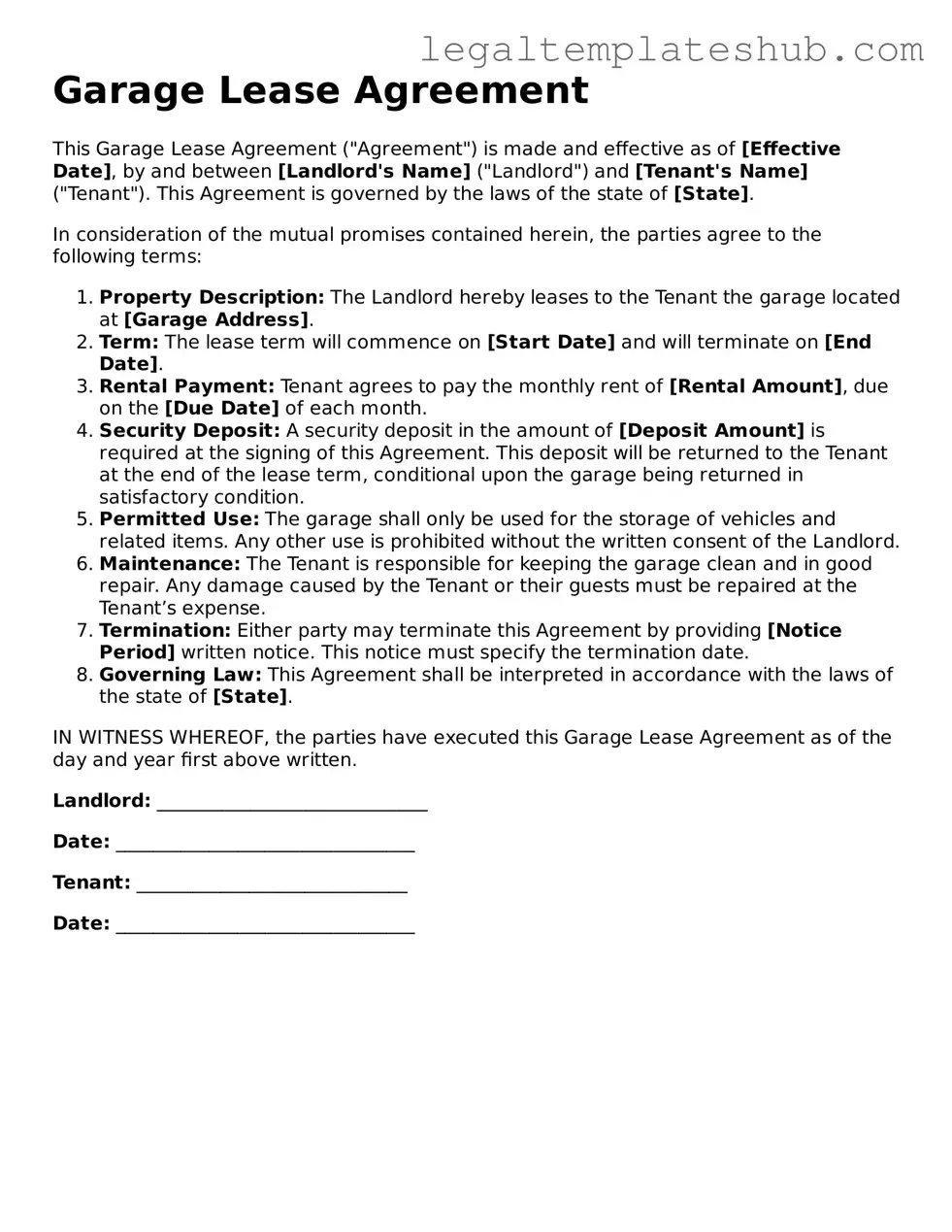Printable Garage Lease Agreement Template
A Garage Lease Agreement is a legal document that outlines the terms and conditions under which one party rents a garage space from another. This agreement protects the rights and responsibilities of both the landlord and the tenant, ensuring clarity in the leasing process. If you're ready to secure your garage lease, please fill out the form by clicking the button below.
Access Editor
